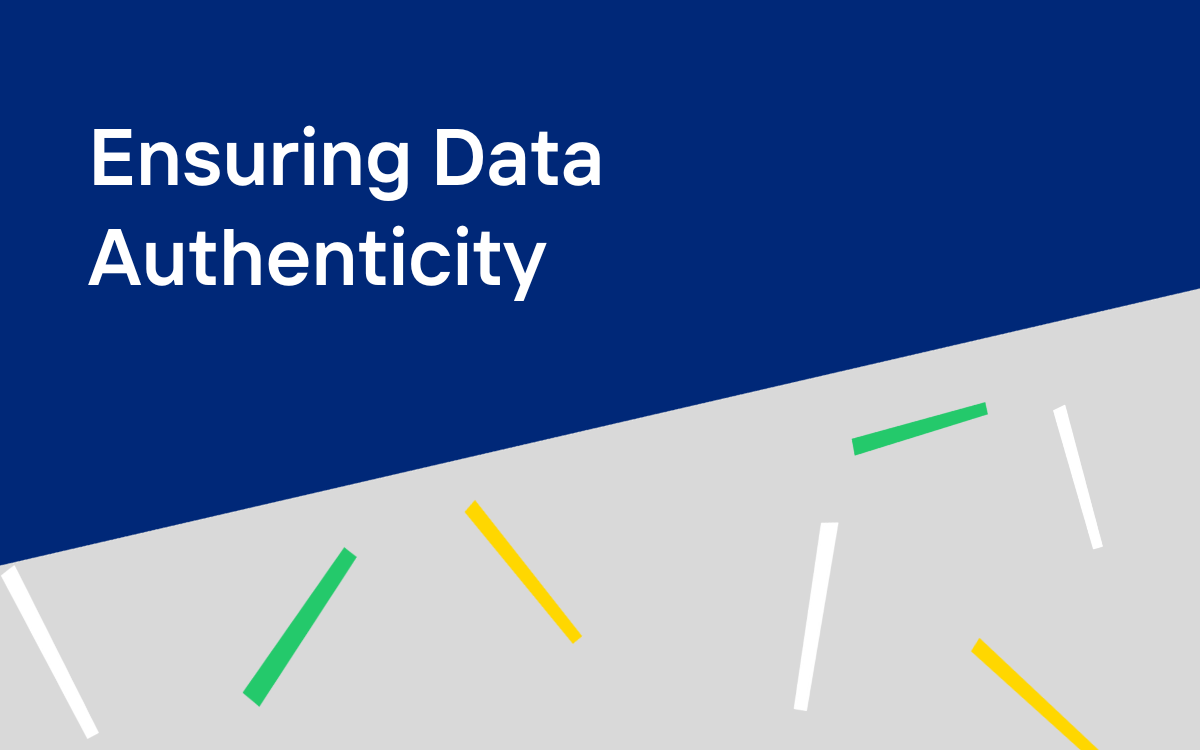In a world where digital transactions and online services are increasingly becoming the norm, the risk of account takeover fraud continues to rise. This insidious form of cybercrime not only has the potential to cause significant financial losses but can also result in irreparable damage to a person or organization’s reputation. Luckily, there are steps you can take to protect your organization’s accounts and safeguard your sensitive information.
Here we’ve put together a comprehensive understanding of account takeover fraud, its methods, and the role some markets have in facilitating such attacks. With this understanding, you will be equipped with knowledge on password security and management, account monitoring and detection, and the implementation of account takeover protection solutions to successfully defend against this ever-growing threat.
Short Summary
- Account takeover fraud is a type of cybercrime that can cause substantial financial and reputational losses.
- To protect against account takeovers, organizations should implement security measures such as multi-factor authentication, password managers, account monitoring & bot detection tools.
Understanding Account Takeover Fraud
Account takeover fraud is a type of cybercrime that occurs when cybercriminals gain unauthorized access to legitimate online accounts, typically by using stolen credentials. This can result in substantial monetary and reputational losses for both individuals and organizations. With an abundance of financial accounts and online presence, the potential for account takeover fraud is amplified, especially when users tend to use the same password across multiple accounts.
A staggering 23% of global merchants have experienced account takeovers, emphasizing the importance of proper password management and security measures. Fraudulent activities such as loyalty fraud, card testing, and bad transactions can be performed through account takeover fraud, where attackers gain unauthorized access to accounts.
To avoid the damaging consequences of such fraud, it is paramount to adopt proactive measures to safeguard confidential data and detect any irregular activity on accounts.
Methods Used in Account Takeover Attacks
Attackers employ various methods to gain access to user accounts, such as:
- Phishing
- Malware attacks
- Social engineering
- Data breaches
- Password spraying
- Credential stuffing
Each method of attack may result in data theft, financial loss, and identity theft. To prevent account takeover attacks, it is recommended to require strong passwords and multi-factor authentication, monitor account activity, and regularly update security measures. By staying vigilant and adopting these strategies, you can significantly reduce the risk of account takeover fraud.
The Role of Darknet Markets

Darknet markets are online marketplaces that facilitate the trading of illicit materials, such as stolen credentials, usernames, and passwords. These markets contribute to the prevalence of account takeover fraud by providing a platform for buying and selling stolen credentials.These marketplaces are part of a highly sophisticated underground supply chain that supports account takeover fraud and many other cybercrimes. Attackers are highly specialized. Adversaries that breach data bases want to primarily focus on breaching databases. Rather than breach a database and then conduct an account takeover attack, they will sell the stolen data they have to other attackers. By understanding this underground supply chain and its role in account takeover fraud, you can better appreciate the importance of implementing robust security measures to protect your accounts and sensitive information from falling into the wrong hands.
Password Security and Management

Proper password security and management are crucial in preventing unauthorized access to accounts. With many users having multiple stored passwords to remember, it is common for them to frequently reuse their passwords, presenting an opportunity for cybercriminals to exploit via tactics such as spoofing and phishing emails, or the purchase of stolen credentials online.
Password protection assists in safeguarding data from malicious actors by recognizing and preventing known weak passwords and terms specific to an organization. By maintaining strong password security and management practices, you can minimize the risk of unauthorized access to your accounts and reduce the likelihood of falling victim to account takeover fraud.
Password Managers
A password manager is a technology tool or software application that assists users in:
- Creating, saving, managing, and utilizing passwords across various online services
- Securely storing passwords in an encrypted database
- Generating strong, unique passwords for each account
- Providing features such as auto-fill, allowing users to quickly and securely log into websites without having to manually enter their passwords.
Utilizing a password manager can help safeguard users from account takeover attacks by:
- Making it more difficult for hackers to guess or decode passwords
- Assisting users in creating strong, unique passwords for each account
- Decreasing the risk of password-related breaches and securely store passwords
To maximize the benefits of using a password manager, it is imperative to:
- Utilize a secure password for the password manager itself
- Activate two-factor authentication for enhanced security
- Consistently update passwords
- Review accounts for any suspicious activity
Multi-Factor Authentication
Multi-Factor Authentication (MFA) is an authentication method that requires the user to provide two or more verification factors to gain access to an account or system. It adds an additional layer of security by combining various types of credentials, such as passwords, biometrics, or security tokens. MFA helps ensure unauthorized access and account takeover are prevented.
In order to effectively utilize MFA, it is advised to utilize strong passwords, enable two-factor authentication, utilize a password manager, and regularly update security measures. Furthermore, it is essential to instruct personnel on the importance of using MFA and to regularly monitor accounts for any suspicious activity.
While multi-factor authentication (MFA) is an essential method to defend against account takeovers (ATO), as its adoption grows, attackers are increasingly targeting MFA security measures in their ATO efforts.
Account Monitoring and Detection
Account monitoring involves:
- Assessing activity for any signs of suspicious activity
- Identifying and preventing account takeover fraud
- Detecting potential compromises
- Taking appropriate measures to safeguard your sensitive information and accounts
By keeping a close eye on your accounts, you can ensure the security of your personal information.
User profiling, which involves analyzing historical data and user behavior to identify patterns and detect potential anomalies, is an essential component of account monitoring. Threat intelligence and monitoring tools can be utilized to analyze data from various sources in order to detect potential threats and account compromises.
By employing these tools and maintaining vigilance in monitoring your accounts, you can significantly reduce the risk of unauthorized access and account takeover fraud.
Behavioral Analysis
Behavioral analysis is a critical element in the prevention of account takeover fraud. By monitoring user behavior patterns, organizations can detect potential compromises and take appropriate measures to safeguard their accounts. Behavioral biometrics solutions make use of various user behavior patterns to create a unique baseline. These may include:
- Keystrokes
- Mouse movements
- Typing speed
- Navigation patterns
Notifications can be generated when any discrepancies are noted from the established norm, suggesting potential fraudulent activity. By analyzing and understanding these patterns, organizations can swiftly detect and respond to any suspicious behavior, ensuring the security of their accounts and sensitive information.
Behavioral analysis is a good step, but modern bots look and act like humans now more than ever before. Botters can even use haverested digital fingerprints from real user sessions. Making behavioral analysis less effective when stopping sophisticated adversaries.
Alerts and Notifications
Alerts and notifications are forms of communication that provide users with information regarding important or time-sensitive events or updates, usually delivered through various channels such as pop-up messages, sound alerts, or visual indicators on devices like smartphones or computers. They are pivotal in providing early warnings of potential breaches, thus allowing users to take prompt action to safeguard their accounts.
Most accounts provide the ability to customize the alerts and notifications received. For example, users can opt to receive notifications when their access accounts are accessed from an unfamiliar device or location, when a password is altered, or when suspicious activity is identified. By setting up and configuring these alerts and notifications, you can stay up to date on your account activity and detect any dubious activity that may signal a potential account takeover.
Implementing Account Takeover Protection Solutions
Account takeover protection is a solution that monitors potential high-risk behavior at account access, purchase, and redemption of points. Implementing account takeover protection solutions can help safeguard sensitive information and accounts.
Detecting suspicious account activity, verifying compromised credentials, implementing rate limits on login attempts, deploying bot detection, utilizing ID proofing, and implementing passwordless authentication are some tools and solutions that can be used to help reduce the risk of ATO attacks. By incorporating these solutions, organizations can guarantee that their accounts are secure and their data is protected.
Best Practices for Account Takeover Prevention
Adopting best practices for account takeover prevention can help minimize the risk of unauthorized access to your accounts. Here are some key steps to consider.
- User education and security awareness training: Provide users with information regarding common attack methods, phishing techniques, and recommended security practices.
- Implement strong passwords: Encourage users to create unique, complex passwords and consider using a password manager to securely store them.
- Enable multi-factor authentication: Require users to provide additional verification, such as a code sent to their mobile device, in addition to their password.
- Monitor accounts for suspicious activity: Regularly review account activity and set up alerts for any unusual or unauthorized access attempts.
- Utilize bot detection software for a proactive strategy in preventing account takeover fraud
By following these best practices, you can effectively protect your accounts and sensitive information from the ever-evolving threat of account takeover fraud.
Employee Training
Employee training is a structured program designed to provide employees with the knowledge and skills necessary to perform their job duties effectively. It can facilitate the acquisition of new competencies, broaden understanding, and enhance performance. In the context of account takeover fraud prevention, employee training should include cybersecurity awareness training to assist employees in recognizing the potential risks associated with online activities and how to guard themselves and their organizations against cyber threats.
Providing clear objectives, using a variety of training methods, and offering feedback are recommended practices for effective employee training. By ensuring that your employees are well-informed and educated on cybersecurity best practices, you can create a strong first line of defense against account takeover fraud and other cybersecurity attacks.
Regularly Updating Security Measures
Regularly updating security measures is essential in order to maintain a robust defense against account takeover fraud. Attackers are continuously attempting to exploit security vulnerabilities, and regularly updating security measures helps to guarantee that any new vulnerabilities are addressed promptly. Software patches are updates to existing software that address security vulnerabilities or incorporate new features, and they are essential for maintaining a strong defense against attacks.
Password policies are regulations that users must adhere to when constructing and managing their passwords. These policies may include stipulations such as incorporating a combination of letters, numerals, and symbols, regularly altering passwords, and not divulging passwords to any other individual. By implementing and adhering to strong password policies, you can further enhance your organization’s defenses against account takeover fraud.
Bot Detection
Bot detection emerges as a powerful deterrent to account takeover fraud, effectively identifying and blocking automated malicious activities. By discerning between legitimate human interactions and suspicious bot activities, it can preemptively flag and halt fraudulent attempts, significantly reducing the incidence of account takeover fraud. Through robust bot detection measures, organizations can provide a safer, more secure digital environment, thereby protecting their customers and preserving their brand integrity.
Bot detection is an effective solution to stop account takeover fraud, because it targets the tool fraudsters use to conduct their attacks at scale. ATO requires testing massive amounts of credentials in order to find the few that work. This process would be impossible to do manually at a pace that would be worth an attacker’s time. By stopping the automation attackers use you can take away the true motivation behind their attack, making a profit. If you can undermine the ROI of the attack, the adversary will move on to an easier target.
Kasada to Protect Against Account Takeover Fraud
As digital transactions become more and more commonplace, the risk of account takeover fraud has surged. This form of cybercrime, where an attacker gains unauthorized access to a user’s account, can lead to significant financial and reputational damage.
Kasada’s set it and forget it platform allows organizations to stop malicious automation, without having to constantly manage their solution. Kasada’s agile architecture also remains resilient to reverse engineering attempts, meaning even highly motivated attackers will be thwarted and left frustrated.
To see how we can help you defend against account takeover fraud and other automated attacks, request a demo today.
Frequently Asked Questions
What is account takeover protection?
Account takeover protection involves security measures designed to prevent unauthorized access to user accounts, a scenario known as account takeover (ATO). These measures include work to detect, prevent, and mitigate unauthorized access, safeguarding users and organizations from the potential damages of account takeover fraud.
What are the risks of account takeover?
Account takeover can lead to significant financial losses as fraudsters are able to make unauthorized purchases and transfer funds. Moreover, criminals have the potential to infiltrate multiple relationships with access to stolen account information, creating a serious threat to a person’s identity.
What does account takeover mean?
Account takeover is a form of identity theft and fraud, where a malicious third party gains access to a user’s account credentials. Attackers typically purchase stolen passwords and usernames on the dark web in order to gain unauthorized access with malicious intent.
What are some common methods used in account takeover attacks?
Account takeover attacks commonly involve credential stuffing, phishing, malware, and data breaches, making it important to be vigilant when it comes to online security. It is essential to take steps to protect yourself from these types of attacks.
How can a password manager help in preventing account takeover fraud?
Password managers allow users to generate and securely store strong passwords for each account, making it harder for hackers to guess or decode passwords and thus preventing account takeover fraud.This makes it easier for users to keep their accounts secure, as they no longer have to remember multiple passwords or use the same password for multiple accounts.
What is bot detection?
Bot detection is a cybersecurity process that identifies and distinguishes automated bot activities from legitimate human interactions on a network or website. It employs various techniques to detect suspicious activities. By doing so, bot detection plays a crucial role in mitigating cyber threats like data breaches, account takeover fraud, and Distributed Denial of Service (DDoS) attacks.





